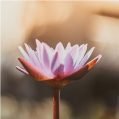Ashtanga Vinyasa flow (Iyengar)

Ashtanga Vinyasa Yoga is a dynamic and physically demanding style of yoga that follows a specific sequence of postures. It was popularized by Sri K. Pattabhi Jois and is known for its rigorous flow of postures, synchronized with the breath (vinyasa). Here's an overview of the practice:
Sequence of Postures
Ashtanga Vinyasa Yoga follows a set sequence of postures, which are divided into different series. The primary series, known as Yoga Chikitsa, focuses on detoxifying and aligning the body. The intermediate series, Nadi Shodhana, goes deeper into the energetic channels of the body. The advanced series (Sthira Bhaga) include advanced postures.
Vinyasa
The practice is characterized by the use of vinyasa, which means a synchronized movement with breath. Each movement is linked to a specific inhale or exhale. For example, you might inhale as you lift into a backbend, and exhale as you fold forward.
Breath
Breath is central to the practice. The breath, known as ujjayi breath, is deep and audible. It helps create a rhythm for the practice and generates internal heat, aiding in the detoxification and purification of the body.
Bandhas
Ashtanga incorporates the use of bandhas, which are energetic locks or contractions within the body. The three main bandhas are Mula Bandha (root lock), Uddiyana Bandha (abdominal lock), and Jalandhara Bandha (throat lock). Engaging these bandhas helps to channel energy and maintain stability in various postures.
Drishti
Drishti refers to the gaze or focal point during a yoga posture. In Ashtanga, each posture has a specific drishti, which helps to maintain concentration and balance.
Mysore Style vs. Led Class
Ashtanga classes are typically offered in two formats. In a Mysore-style class, students practice at their own pace and are given individualized instruction and adjustments from the teacher. In a Led class, the teacher guides the entire class through the sequence.
Progression
Students progress through the series at their own pace, mastering each posture before moving on to the next. This means that the practice can be adapted to suit practitioners of different levels and abilities.
Regular Practice
Consistency is key in Ashtanga Vinyasa Yoga. Regular practice is encouraged, and many practitioners aim to establish a daily practice.
It's important to approach Ashtanga Vinyasa with awareness and respect for your own body. The practice can be physically demanding, so it's advisable to start under the guidance of a qualified teacher, especially if you are new to this style of yoga.





